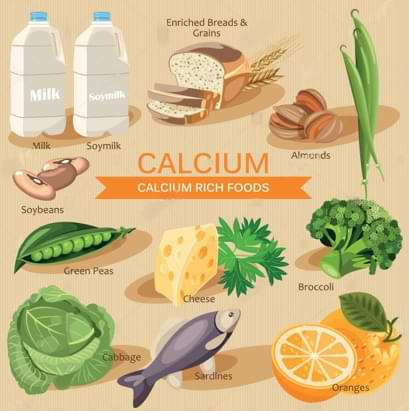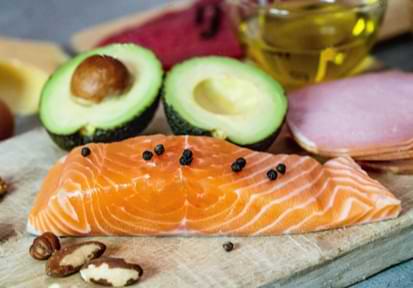FOODS TO EAT TO GROW TALLER DURING AND AFTER PUBERTY
There are different factors affecting growth and development during the entire life cycle.
All these factors could be categorized in two main groups; Genetic and environmental factors [1] .
Nutrition is one of environmental factors.
If you choose to eat the right foods and drinks especially during puberty when you are still growing , it will be easier to increase height more rapidly and reach your genetically predetermined height but of course, other environmental factors like climate, urbanization and altitude will be at play.
During cell division and development, adequate provision of amino acids, calories, vitamins, fats, water and minerals is required thus, the foods you eat daily are closely linked to body growth and development.
More than 50 essential nutrients for body growth and development can be found in the foods we normally consume.
Does milk help you to grow taller?
Milk is one of the foods that will make you or a child grow taller naturally.
It contains several essential nutrients especially protein and calcium.
Look at the top milk consuming countries in the world relative to population size as an example.
The Finns, the Swedes and the Dutch are some of the highest milk consuming nations and on average have the tallest populations in the world
https://tinyurl.com/4psftcr7
And compare that to some of the tallest populations in Africa who are also cattle raring and very high milk consuming tribes.
The Tutsi of Rwanda, Dinka in Sudan, and Masai men In Kenya are the tallest tribes in the world.
In a random selection of 52 Dinka Algeirs, the average height recorded by D.R Bainbridge and D.F Roberts (University of Washington, Seattle, and National Institute for medical research, Mill Hill, London) was 1.826 m (5 ft 11.89 inches).
Yet many other cattle men like the Masai stand over 6’5″.
https://tinyurl.com/yckvpuzx
Hence, milk is definitely one of the foods that will help you grow taller.
Besides calcium, proteins and carbohydrates , milk also contains other nutrients and more crucially insulin-like growth factor-1 (IGF-1), a hormone which is essential for normal bone growth and development.
https://tinyurl.com/bdcrtbmk
However, high concentration levels of Insulin- like growth factor-1 hormone is to some degree associated with increased cancer risk.
https://tinyurl.com/mrxb6wwr
So, milk and animal meats should be consumed in moderation.
Which other Foods and Nutrients will Help you increase height During and After Puberty ?
2. Protein or amino acid Rich foods
Amino acids are the most important feature of proteins in terms of nutrition.
Out of the 20 amino acids required for normal growth and development, 12 can be manufactured by the human body thus, they are considered non essential.
The other 8 have to be obtained from the foods we eat thus they are termed essential amino acids and without them, tissue growth and repair is impaired.
All the essential amino acids can be found in protein from animal meats and other animal products.
Hence, eggs, dairy and animal meats like beef, fish, pork, and poultry are recognized as complete and high quality proteins .
A number of studies have linked protein from animal meat (fish inclusive ) to increased concentration of Insulin-like growth factor 1 (IGF-1) in the blood.
IGF-1 is associated with bone mineralization and plays a vital role in bone lengthening since IGF-1 also triggers the rapid reproduction of cells and their differentiation at the growth plate cartilage zone.
Because proteins obtained from plant foods like fruits, vegetables, beans and seeds, lack some of the essential amino acids, in most cases proteins from such foods are thought to be incomplete apart from soy and quinoa.
https://tinyurl.com/366efmdy
Protein intake is particularly crucial because it provides essential amino acids required for protein synthesis, which is necessary for growth.
Amino acids like lysine and arginine have also been linked to growth hormone and insulin secretion and these hormones particular growth hormone catalyze accelerated growth especially during puberty.
Hence, When protein intake is too low, growth is restricted.
Best sources of animal protein:
Eggs, beef, diary products (milk, cheese etc), mutton, pork, chicken, Fish, turkey and sea food.
Proteins found in milk (whey and casein), eggs, and beef have the highest protein score or they are the highest quality proteins.

What if you are a vegan or prefer a vegetarian diet?
This is what you need to know;
In general, different plant groups are limited in specific amino aids.
Proteins in legumes ( limited in methionine and cysteine)
Cereals ( limited in lysine, tryptophan)
vegetables, nuts and seeds ( limited in methionine, cysteine, lysine, threonine)
seaweed ( limited in histidine, lysine)
Secondly, the digestibility and bioavailability of plant proteins is lower than that of proteins from animal sources, due to the high dietary fiber content found in plants and the plant bio-compounds ( phytochemicals).
Best Fruit sources of protein :
Avocados , Guavas , Blackberries , Bananas , Jack fruit, Passion Fruit, Apricots, and Kumquats .
Best Vegetable sources of proteins:
Soy beans, quinoa, peas, lentils, lima beans, Green peas, cooked succotash, kale, broccoli, white cooked mushrooms, cauliflower, edible-podded peas.
Best sources of proteins in nuts : Pea nuts, pistachios, walnuts, almonds, and cashew nuts.
How much proteins do you require a day?
The Recommended Dietary Allowance (RDA) for protein is 0.8 grams of protein per kilogram of body weight.
That is; multiply 0.8 by your body weight in kilograms.
RDA is the amount of a particular nutrient you need to meet your basic nutritional requirements and it’s the minimum amount you need to keep from getting sick — not the specific amount you are supposed to eat every day.
https://tinyurl.com/bdddrpmf
Examples of good protein sources in grams
100 g of cooked serving of most types of fish (18–20 g of protein)
100g of beef ( 26g of protein)
100g of chicken ( 27g of protein)
1 egg ( 6g of proteins)
100mls whole milk ( 7g of proteins)
100g roasted soy beans ( 36g of proteins)
3. Which Vitamins will help you to grow taller ?
Vitamin D
Vitamin D is a nutrient that the body requires in small amounts to function and stay healthy.
Normal vitamin D concentration levels in the blood stimulate calcium and phosphorus absorption in the small intestines.
Without vitamin D, only 10–15% of dietary calcium and about 60% of phosphorus are absorbed.
That’s why vitamin D deficiency during childhood can cause delayed growth and bone abnormalities while during adulthood, it increases risk of fractures.
Thus, the primary function of vitamin D is to maintain normal blood calcium and phosphorus concentration levels to provide the conditions for bio chemical functions, including bone mineralization.
https://tinyurl.com/mrympfmv
Studies have demonstrated that vitamin D can potentially make growth plate cells more sensitive to GH and IGF-1.
It’s also suggested that changes in seasons can affect growth for instance, during summer when the exposure to sun is greatest, children experience greater growth spurts than during winter when there is no exposure to sun.
https://tinyurl.com/5n7bu2nj
This is attributed to the fact that when the body is exposed to the sun during summer, it synthesizes vitamin D. [2]
Sources
In humans, the most important forms of vitamin D are vitamin D2 (ergocalciferol) and D3 ( cholecalciferol).
Vitamin D2 is found naturally in sun-exposed mushrooms.
Vitamin D3 is naturally obtained from the sun.
According to the journal of investigative dermatology ;
a) The ultra violent B-rays in sunlight trigger the synthesis of vitamin D and this is the body’s principal vitamin D source because usually only small amounts are obtained from diet.
b) For most European and North American cities, 9–16 minutes of mid day sun exposure to 35% of the body three times a week is enough for the body to synthesize a sufficient amount of vitamin D.
c) Mid day is the best time to expose the body to the sun for vitamin D synthesis because at solar noon, sufficient amounts of ultra violent B-rays are available.
It’s the time when the sun is directly overhead.
Its also the time when solar radiation takes the shortest path to the earth’s surface.
https://tinyurl.com/5n77a6te
Since Vitamin D is fat soluble, It can be stored in the body fat for a limited time until the reserves get depleted.
Hence you don’t necessarily have to expose your skin to the sun every day.
Vitamin D from sun exposure may last at least twice as long in the blood compared with ingested vitamin D.
https://tinyurl.com/2p9232kx
Vitamin D3 can also be obtained from most oily fish like mackerel, herring, and salmon.
Since only a couple of foods are good sources of vitamin D, besides sun exposure, the best way to get additional vitamin D is through supplements.
Many multivitamins contain 800 to 1000 IU of vitamin D.
vitamin D2 can also be obtained from foods like ;
caviar, and egg yolk.

The Recommended Dietary Allowance (RDA) For Vitamin D
According to the institute of medicine, individuals aged between 1 – 70 years require 600 IUs/ International Units per day while those aged Above 70 years require 800 IUs per day.
Though some experts suggest adults require more vitamin D.
Examples of the best sources of Vitamin D in IUs
1 cup of vitamin D-fortified Milk, ( 115 – 130 IUs)
1 tea spoon of Cod liver oil, ( 450 IUs)
Salmon (approx. 400 IUs)
swordfish (566 IUs)
4. Minerals that Help You Grow Taller
Can Calcium Help You Grow Taller ?
Calcium is a metallic element mainly stored in bones including teeth and up to 99% of calcium is deposited in bones by the body.
It’s therefore very important for normal bone development functioning and structure.
Calcium also plays a vital role in contracting muscles including your heart muscles as well as enabling blood coagulation though not more than 1% of total body calcium plays this role.
https://tinyurl.com/2fckzftp
Bone is constantly remodeling by continuously removing old bone and replacing it with new one by deposition of calcium though age plays a role in this process.
Insufficient intake of both calcium and vitamin D during stages of rapid bone growth adversely affects bone development and it’s responsible for ailments like rickets – softening, and distortion of the bones typically resulting in bow legs.
Children therefore require plenty of calcium during puberty stage due to the accelerated muscular, skeletal and endocrine development.
https://tinyurl.com/2mx6ta9p
Which calcium food Sources will help you to grow taller ?
1. Egg shells are probably the best source of dietary calcium with 38mg of calcium per gram of an egg shell.
2. Dairy products, like cheese, milk, and yogurt.
3. Tinned salmon and sardines with bones.
4. Some leafy green vegetables like Kale, broccoli, and calcium-fortified foods.

The Recommended Dietary Allowance(RDA) For Calcium
The nutritional recommendations for calcium vary throughout people’s lives, with higher requirements during
periods of rapid growth, such as during childhood and adolescence.
According to the institute of medicine,
Children aged 1-3 years require at least 700mg a day but shouldn’t exceed 2,500 mg.
Age 4- 8 years require 1000 milligrams/mg a day but shouldn’t also exceed 2,500 mg.
Age 9- 18 years require 1,300 mg but shouldn’t exceed 4000 mg.
Age 19 – 50 years require 1,000 mg but shouldn’t also exceed 4000 mg.
51 – 70 years require 1000 mg/ male 1200 mg/ female but shouldn’t also exceed 4000 mg.
Age 71 years plus ( 1200 mg ) but shouldn’t also exceed 4000 mg.
Examples of the best sources of Calcium in mg
100g of an egg shell ( 3,800 mg )
100ml 0f whole milk ( 120 mg )
100ml 0f Yogurt (130 mg)
110g 0f broccoli (120 mg)
100g 0f roasted soy (140 mg)
Zinc
Zinc is a mineral present in the body in trace amounts, normally obtained from the diet and its daily intake is required to maintain a steady state because the body doesn’t have an efficient storage system of zinc.
https://tinyurl.com/uu3x8teb
The recommended daily consumption is 15 mg for adults.
It plays a role in protein synthesis, DNA synthesis , immune function- (referred to as the gateway to immune system), wound healing, cell division and also supports normal growth and development of the fetus during pregnancy, childhood, and adolescence.
In human subjects, body growth and development is strictly dependent on Zinc and dietary zinc deficiency has been linked to impaired skeletal development and bone growth in both humans and animals.
Zinc plays a role when it comes to hormonal mediation by participating in;
a) Growth Hormone synthesis and secretion.
Circulating levels of growth hormone and IGF-1 are reduced during zinc deficiency.
b) The action of Growth Hormone on liver somatomedin-C production.
Somatomedin-C is secreted by the liver and muscles to foster the division and growth of cells in conjunction with growth hormones.
c) somatomedin-C activation in bone cartilage.
In addition to all the above functions, zinc interacts with hormones like insulin, thyroid hormones and testosterone.
Such hormones contribute to bone growth and development.
An assessment of the impact of zinc on growth among children and adolescents established that after 12 months of supplementing the diet with zinc, the body grows more rapidly. [3]
Sources;
Good news is, zinc is found in a wide variety of foods and the body needs just a limited amount to execute the functions that require zinc.
Oysters contain more zinc per serving than any other food, but if you regularly consume red meat, poultry, nuts, whole grain bread, beans, breakfast cereal, pork and seafood (such as crab and lobster), chances are high that you get enough zinc on a daily basis.
Best Fruit sources of zinc:
Dried Apricots, Dried Peaches, Prunes, Avocados, Blackberries, bananas, Figs, Raspberries, Dates.

Best sources of zinc in Vegetables:
Cabbage, Palm Hearts, Lemon Grass, Green Peas, Cashews, Mushrooms, Spinach.
The Recommended Dietary Allowance (RDA) For Zinc
The recommended daily consumption is 15 mg for adults though the RDA for adults is 11mg – That is the least amount that will stop your body from getting sick.
Age 4- 8 years ( 5 milligrams/mg)
Age 9- 13 years ( 8 mg)
Age 14 – 18 years ( 11 mg / male 9 mg/ female)
Age 19 years plus ( 11 mg/ male 8 mg/ female)
Examples of the best sources of Zinc in mg
100g Oysters ( 16 milligrams/mg)
100g beef (4.5 mg)
100g pumpkin seeds ( 7.8 mg)
100 g pork ( 3.1 mg)
100g oats (3.6 mg)
5. Carbohydrates
During infancy and childhood, carbohydrates are one of the main sources of dietary energy and are essential for growth and development.
Carbohydrates found in fruits and vegetables are complex because they contain longer and complex sugar molecules which are harder to digest than those found in simple carbohydrates like sugar, glucose, and corn syrup.
The majority of carbohydrates in our diets should come from fruits and vegetables instead of sugars, sweetened foods, syrups, sodas and sugar added fruit juices.
Because complex carbohydrates are not easily digested, such carbohydrates are deposited in the colon where they ferment and release organic acids thus lowering the hydrogen ion concentration in the intestines.
A reduction in hydrogen ion concentration changes calcium formation and solubility within the colon which simplifies calcium absorption and transportation throughout the body thereby augmenting skeletal growth.
https://tinyurl.com/yckmd8sv
Sources:
Carbohydrates are found in many foods.
However, diets high in refined sugar have been studied extensively and shown to affect bone growth and mechanical strength.
Drinking carbonated beverages, such as soft drinks is linked to a reduced amount of minerals in bones.
You should stay away from foods with excessive sugar and simple carbs like pastas, pastries and refined grains.
Rather, if you wish to have a healthy break fast, earth’s Best Organic Whole Grain Oatmeal , will be a good option and instead of refined white rice, Whole grain Rice Cereal will be a better choice.
fruits, vegetables like potatoes and other whole grain foods like maize and whole wheat bread are some of the good sources .
6. Fats
Studies show that sufficient amounts of polyunsaturated fatty acids like omega-3 fatty acids promote osteoblast activity while impeding osteoclast activity thereby promoting bone formation.
https://tinyurl.com/4a4n5fvx
Osteoblasts are bone cells responsible for bone formation while osteoclasts break down bone.
Thus, omega-3 fatty acids promote bone formation.
Sources
Foods with fatty acids include; avocados, eggs, almonds and foods that compose the mediterranean diet like oysters, oily fish ( salmon, mackerel, tuna etc) and cod liver oil.

However, some fats should be avoided because they are associated with a higher risk of getting cardiovascular diseases and diabetes.
Such fats include;
1. Saturated fats.
These tend to have higher melting points and they turn solid at room temperature.
Most fats fall in this category.
For example; cheese, butter, coconut oil, ghee, fatty meats and processed meat like salami and sausages.
2. Trans fats.
A form of unsaturated fats that occur in small amounts in nature and therefore mainly produced artificially.
Artificial trans fats (or trans fatty acids) are created in an industrial process that adds hydrogen to liquid vegetable oils to make them more solid.
Such fats can be found in fried foods like fried chicken or potato chips, and baked foods like cakes, pies, cookies, pizza, cakes, margarine and other spreads.
The good Fats
Unsaturated fats
unsaturated fats are liquid at room temperature.
Unsaturated fat is often described as ‘good fat’ and it’s recommended to replace saturated fat with unsaturated fat in the diet as it helps to lower cholesterol – one of the risk factors of heart disease.
Unsaturated fats include vegetable oils such as canola, almonds, peanut butter, fish oils, olive, sesame, sunflower and avocado oil among others.
Water
Though it provides no calories or organic nutrients, water is the most critical nutrient for health and it is the most abundant nutrient in the body, not to mention the most important.
It is involved in many bodily functions, including being the carrier of nutrients to reach biological fluids and also the main channel for elimination of waste and toxins.
Since the body lacks the water storage, a constant supply of fluids is needed to maintain water balance.
A daily intake of at least 1.2 to 3.5 liters of water should be guaranteed to maintain body water balance.
Natural mineral water.
Though dairy products are the most recognized dietary sources of calcium, natural mineral water is also potentially a god source.
Mineral water with high calcium content can therefore provide both dietary calcium and adequate hydration.
Majority of studies have demonstrated that mineral waters rich in calcium have a positive impact on both bone response to calcium and bone density measurements.
Taking vegetables and fruits like oranges, lettuce, and watermelon which contain plenty of water and minerals, may also be effective in regards to hydrating the body than taking water alone.
AUTHOR BIO
As a short guy who was psychologically distressed almost everyday due to the challenges he faced in life accountable to his height, Dennis Raney (Bsc.) finally somehow found a way to overcome this adversity by naturally increasing his height with lifestyle and healthy changes.
He has been researching this topic for over a decade and practically applying the knowledge so he decided to share his wealth of information about the topic of increasing height both during and after puberty in the book and on this blog.
Feel free to connect with him for a conversation:
Email: Dennis »»
Facebook: Connect »»
NEXT : how to grow taller after puberty complete guide »»»
Please share if you like this page Thanks!



